If you’ve ever smoked a CBD cigarette and wondered about the wonders of wild hemp, you’re in the right place. Because everybody does that, right?
Anyways, wild hemp, also known as “ditch weed,” is a versatile plant that has been cultivated for thousands of years. Long before it became trendy, ancient civilizations were already using hemp for everything from making ropes and textiles to medicinal purposes.
In this blog, we’re going to explore everything from the humble farm fields where wild hemp grows to the number of wellness benefits it can offer today. You’ll discover how this plant has evolved throughout history, its many uses, and the science behind its health benefits.
So, grab a cup of tea, sit back, roll your hemp wraps, and let’s dive into everything you need to know about wild hemp!
History of Wild Hemp
Wild hemp has a rich history dating back to ancient times when it was valued for its many different uses and cultural significance.
Early civilizations, such as the Chinese and Egyptians, were among the first to harness its potential. They used hemp fibers to create strong ropes and durable textiles, while the seeds and oils were used for their medicinal properties. In ancient India, hemp held spiritual importance and was frequently used in religious rituals.
Over the centuries, the cultivation of wild hemp evolved, adapting to different climates and cultural needs. From being a staple in ancient agriculture to becoming a modern wellness trend, wild hemp has continually reinvented itself while maintaining its roots in tradition.
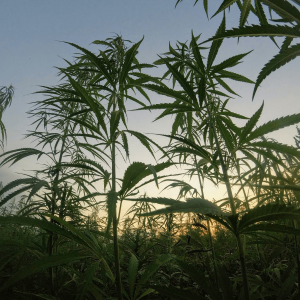
Botanical Characteristics of Wild Hemp
When it comes to the botanical characteristics of wild hemp, this resilient plant certainly has a lot going for it.
Wild hemp, scientifically known as Cannabis sativa, typically exhibits a tall, slender structure with a sturdy fibrous stalk, reaching up to 10 to 15 feet in height. Its leaves are distinctly serrated, arranged in a palmate formation, and can vary in color from light green to a deeper shade.
One noticeable difference between wild hemp and its cultivated cousin lies in its THC content. Wild hemp generally contains much lower levels of THC, the main psychoactive compound, making it non-intoxicating.
As for growth conditions, wild hemp is extraordinarily adaptable, thriving in a range of environments from temperate to subtropical regions. It often makes its home in abandoned fields, along roadsides, and in other disturbed soils where it can grow uninhibited.
Wild Hemp vs. Industrial Hemp
When comparing wild hemp to industrial hemp, it’s essential to understand the genetic differences that set them apart. Wild hemp, often referred to as “ditch weed,” grows naturally and hasn’t been selectively bred for specific traits. On the other hand, industrial hemp has been selectively cultivated to enhance certain characteristics, such as fiber quality and cannabinoid content.
Industrial hemp is bred to produce low levels of THC and higher concentrations of CBD, making it an ideal crop for various commercial uses. These genetic distinctions influence not only the plant’s characteristics but also its uses in different industries.
In terms of THC and CBD content, wild hemp generally contains much lower levels of THC compared to its cultivated counterpart, making it non-intoxicating. However, the CBD content in wild hemp and CBD cigarettes can also be quite variable and often lower than that found in specially bred industrial hemp strains.
Industrial hemp is commonly used in the production of CBD oil, CBD cigarettes, textiles, bioplastics, and even construction materials. Conversely, wild hemp is less predictable in its cannabinoid profile, but still holds value for ecological restoration projects, phytoremediation, and as a genetic reservoir for future breeding programs.
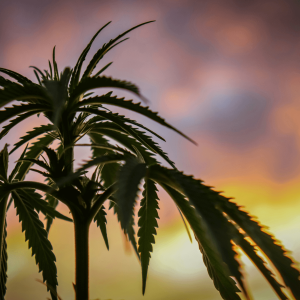
Legal Status of Wild Hemp Globally
The legal status of wild hemp varies significantly around the world, often influenced by the broader regulatory frameworks surrounding cannabis.
In the United States, for example, the 2018 Farm Bill removed hemp from the list of controlled substances, provided it contains less than 0.3% THC. This legislation paved the way for industrial hemp farming but did not specifically address wild hemp, which remains a grey area in many states.
In the European Union, wild hemp is generally tolerated but tightly regulated to ensure that THC levels stay within legal limits.
Globally, the legal distinctions between wild hemp and marijuana are crucial. Marijuana typically contains high levels of THC, the psychoactive component, and is subject to stringent legal restrictions in many countries. In contrast, wild hemp, with its naturally low THC content, is often treated more leniently, although regulations can still be complex and vary widely.
Recent changes in legislation in countries like Canada and parts of South America are increasingly recognizing the agricultural and medicinal potential of hemp, including wild varieties. These evolving legal frameworks spotlight the importance of establishing clear definitions and regulations to distinguish between different types of cannabis plants.
Cultivation and Harvesting
Cultivating wild hemp successfully requires understanding its optimal growing conditions and adopting some sustainable techniques.
Wild hemp thrives in well-drained soils with a pH level of 6.0 to 7.5 and prefers regions with moderate rainfall and plenty of sunlight. For sustainable cultivation, it’s important to practice crop rotation, use organic fertilizers, and implement natural pest control methods. These strategies help maintain soil health and biodiversity while minimizing environmental impact.
When it comes to harvesting, timing is key—hemp should be harvested when the seeds are mature but before they start to shatter. The best practices include cutting the stalks early in the morning when moisture levels are optimal, ensuring the hemp is dried properly to prevent mold and degradation. Using equipment like a combine harvester can streamline the process, making it more efficient and less labor-intensive.
Uses of Hemp in the Cannabis Industry: Traditional and Modern
Hemp has been a versatile and valuable crop for centuries, finding uses that span both traditional practices and contemporary innovations.
From ancient textiles and natural remedies to modern-day CBD products and sustainable materials, hemp continues to be a staple in the cannabis industry.
Modern Applications in CBD Products, Recreational, and Medicinal Cannabis
Hemp has carved out a significant niche in the modern cannabis industry, especially when it comes to the production of CBD products. CBD, or cannabidiol, is a non-psychoactive compound found in both hemp and marijuana, but hemp typically boasts higher concentrations of CBD while maintaining low levels of THC.
This has made hemp the go-to source for creating a wide array of CBD products, from oils and tinctures to edibles and topicals and even hemp cigarettes. These products are popular for their potential health benefits, which include relieving anxiety, pain management, and improving sleep disorders without the intoxicating effects associated with high-THC marijuana.
In addition to CBD, hemp is also making strides in the medicinal cannabis sector. Ongoing research suggests that CBD may help with conditions like epilepsy, chronic pain, and even certain types of cancer. This has led to increasing acceptance of hemp-based medicinal products in various countries, paving the way for further scientific exploration and product development.
Comparison of Hemp-Derived Products to Those Made from Marijuana
When comparing hemp-derived products to those made from marijuana, the key difference lies in the concentration of THC and CBD. Hemp-derived products generally have high levels of CBD and less than 0.3% THC, making them non-intoxicating (in raw form) and legal in many jurisdictions. These products are often marketed for their health and wellness benefits, emphasizing their non-psychoactive nature.
On the other hand, marijuana-derived products typically contain higher levels of THC, which is the compound responsible for the “high” associated with cannabis use. These products can range from recreational cannabis, which is used for its psychoactive effects, to medicinal cannabis, which may be recommended for its potential therapeutic benefits. The higher THC content in marijuana products makes them subject to stricter regulations and legal limitations compared to their hemp-derived counterparts.
Ultimately, both hemp and marijuana have their unique advantages and can serve different needs within the cannabis industry. While hemp shines in the wellness and health sectors due to its rich CBD profile, marijuana offers benefits for both recreational use and certain medical conditions where higher THC levels may be beneficial. Understanding these distinctions helps consumers make informed choices about which products best suit their needs.
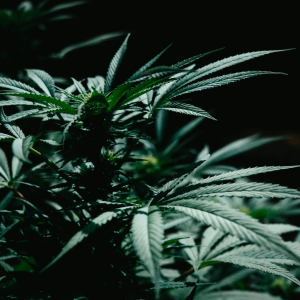
Wild Hemp in Cannabis Medicine
Traditional Medicinal Uses
- Pain relief: Historically, wild hemp has been used to alleviate various types of pain, including headaches, muscle soreness, and joint pain.
- Anti-inflammatory properties: Ancient cultures utilized wild hemp for reducing inflammation, promoting healing in wounds, and treating different types of arthritis.
- Anxiety and stress relief: Traditional herbalists often used wild hemp to help calm nerves and reduce symptoms of anxiety and stress.
- Digestive aid: Wild hemp has been included in natural remedies for various digestive issues, such as nausea, loss of appetite, and digestive discomfort.
Current Research on Medicinal Properties
Recent studies have started to gain a better understanding of the potential medicinal properties that wild hemp may possess. Researchers are particularly interested in the non-psychoactive compounds found in wild hemp, such as CBD and other cannabinoids.
Early findings suggest potential applications in treating epilepsy, chronic pain, and inflammatory diseases. Additionally, there is growing evidence that wild hemp’s terpenes and flavonoids might offer complementary or synergistic health benefits.
As scientific interest in cannabis medicine continues to expand, wild hemp is increasingly being recognized for its potential therapeutic uses without the psychoactive effects typical of higher-THC cannabis varieties.
Potential Health Benefits and Risks
Health Benefits
- Epilepsy and seizure reduction: Studies indicate that CBD derived from wild hemp can help reduce the frequency and severity of seizures in conditions like epilepsy.
- Chronic pain management: Research suggests that wild hemp extracts may alleviate chronic pain by interacting with the endocannabinoid system.
- Anti-anxiety effects: Wild hemp is being examined for its potential to reduce symptoms of anxiety and improve overall mood without the intoxicating effects of THC.
- Anti-inflammatory actions: The anti-inflammatory properties of wild hemp make it a candidate for treating conditions like arthritis, inflammatory bowel disease, and other chronic inflammatory conditions.
Health Risks
- Allergic reactions: Some individuals may experience allergic reactions to hemp products, including skin rashes or respiratory issues.
- Drug interactions: Hemp-based products might interact with certain medications, particularly those metabolized by the liver, necessitating caution and consultation with a healthcare provider.
- Quality and purity concerns: The risk of contamination with pesticides, heavy metals, or other harmful substances is a concern, highlighting the importance of sourcing hemp products from reputable providers.
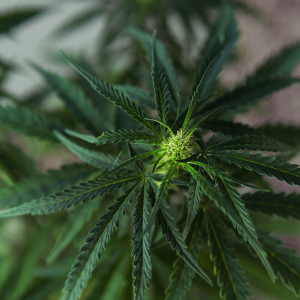
Environmental Benefits of Wild Hemp
Exploring the environmental benefits of wild hemp is exciting. This plant helps fight climate change by absorbing carbon from the atmosphere, reducing greenhouse gas levels. It also shines in soil cleanup, absorbing harmful substances and making the earth healthier.
Additionally, wild hemp supports sustainable farming practices, needing fewer pesticides and less water than many other crops. So, it’s not just good for your health—it’s great for the planet too!
Challenges in Wild Hemp Cultivation
Growing wild hemp isn’t without its hurdles. Although this resilient plant has numerous benefits, cultivating it can be tricky.
From navigating strict regulations to managing environmental conditions, farmers face several challenges that impact the successful growth of wild hemp. Understanding these obstacles is key to unlocking its full potential.
Pest and Disease Management
Growing wild hemp isn’t all smooth sailing, especially when it comes to dealing with pests and diseases. Just like other crops, wild hemp can be a target for a variety of pests like aphids, mites, and caterpillars. These critters can damage the plants, reducing yields and quality.
Fungal diseases such as powdery mildew and root rot also pose significant threats, particularly in humid conditions.
Effective pest and disease management often requires a balanced approach, incorporating both natural and chemical solutions to keep the plants healthy while minimizing environmental impact.
Climate Change Impacts
Climate change is throwing a wrench into the works for many types of agriculture, and wild hemp is no exception.
Shifts in temperature, precipitation patterns, and extreme weather events can all affect hemp growth. For example, prolonged droughts can stress the plants, making them more susceptible to pests and diseases.
On the flip side, excessive rainfall can lead to waterlogged soils and root diseases. Adapting cultivation practices to these changing conditions is crucial for maintaining healthy and productive hemp crops.
Regulatory Challenges
Another big hurdle for wild hemp cultivation is navigating through the maze of regulations. Different countries and even regions within countries have varying rules about growing hemp, particularly when it comes to THC levels. Staying compliant requires constant monitoring and testing, which can be both time-consuming and costly.
Additionally, regulatory changes can happen quickly, complicating long-term planning for hemp farmers. The evolving legal landscape makes it essential for growers to stay informed and agile to meet compliance issues while capitalizing on market opportunities.
Future of Wild Hemp
The future of wild hemp looks promising with innovations in farming techniques and product development on the horizon.
Advancements like efficient breeding methods and precision agriculture could significantly boost yield and quality. Wild hemp also has a potential role in combating climate change due to its carbon-absorbing capabilities and minimal environmental footprint.
Looking ahead, experts predict that in the coming decade, wild hemp will become a key player in sustainable farming and green industries, providing eco-friendly solutions and diverse products from textiles to nutraceuticals.
Conclusion
In summary, wild hemp holds immense promise not only for health benefits but also for environmental sustainability. We’ve seen how its compounds can help with issues like epilepsy, chronic pain, and anxiety, while also being mindful of potential risks such as allergic reactions and drug interactions.
Environmentally, wild hemp contributes to fighting climate change and supports sustainable farming practices. Yet, challenges in cultivation, including pest management, climate change impacts, and regulatory hurdles, cannot be ignored.
Looking forward, the future is bright with innovative farming techniques and its role in eco-friendly industries. We invite you to explore and support wild hemp initiatives—whether through personal use or advocacy—to help realize its full potential.
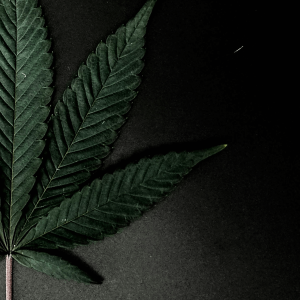
Frequently Asked Questions
1. Is wild hemp good for you?
Yes, wild hemp (including American grown hemp) has numerous potential health benefits. It contains compounds like CBD that can help reduce anxiety, alleviate chronic pain, and offer anti-inflammatory properties without the intoxicating effects of THC. However, it’s important to consult with a healthcare provider to ensure it’s suitable for you, especially if you have existing medical conditions or are taking other medications.
2. Is hemp just CBD?
No, hemp is not just CBD. While CBD is one of the primary active compounds found in hemp, the plant contains over 100 other compounds, including terpenes, flavonoids, and minor cannabinoids. These compounds work together to create what is known as the “entourage effect,” potentially enhancing the therapeutic benefits of the plant and making it a popular smoking alternative. We encourage you to check out the product details of your recent hemp purchase for a full list of its cannabinoids!
3. Is hemp stronger than CBD?
Hemp isn’t necessarily “stronger” than CBD, but it offers a broader range of compounds that can contribute to its overall effects and aromatic flavor. CBD isolate contains only the CBD compound, whereas full-spectrum or broad-spectrum hemp extracts include CBD along with other cannabinoids, terpenes, and flavonoids, which may provide a more comprehensive array of benefits.
4. Does hemp make you feel?
Hemp products, especially those rich in CBD, do not produce a “high” like THC does. Instead, they may promote a sense of relaxation, reduce stress, and help with pain relief. The effects can vary from person to person, so you might feel calmer or more focused when using hemp-derived products. Always start with a lower dose to understand how your body reacts.

 Rewards
Rewards




